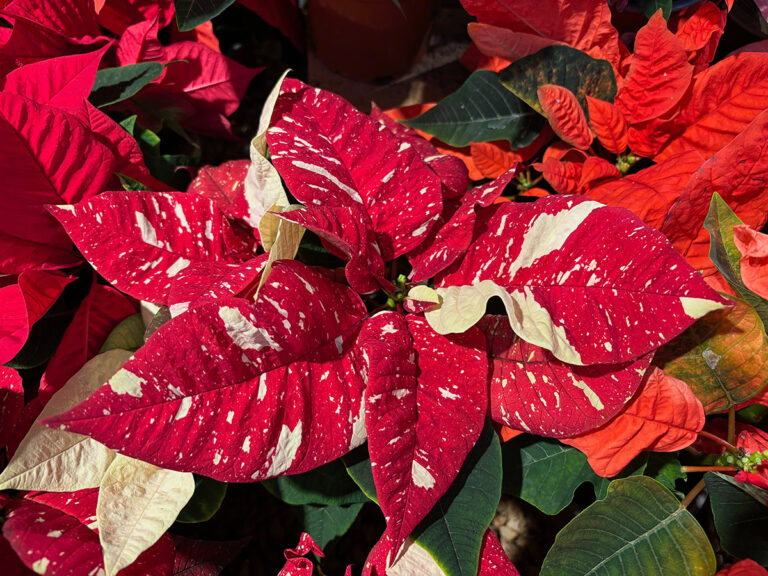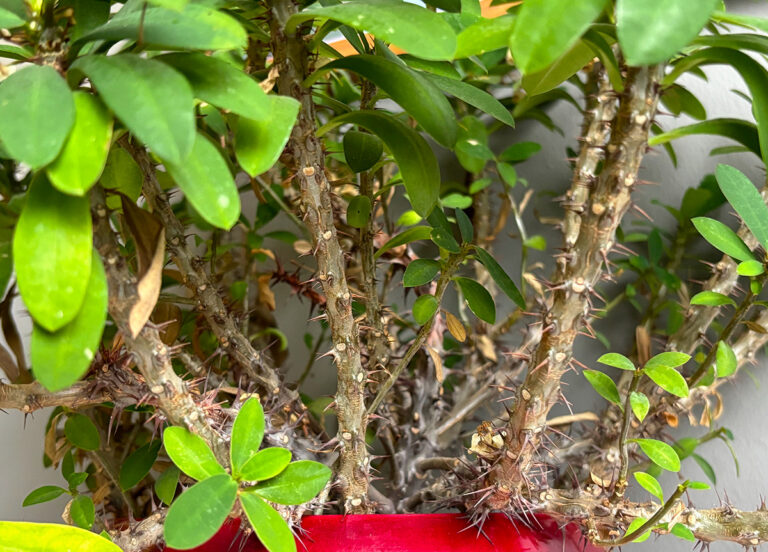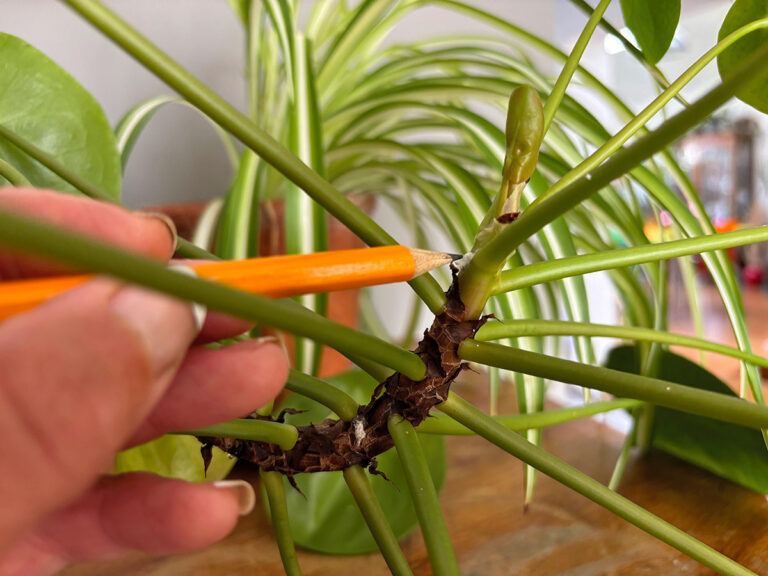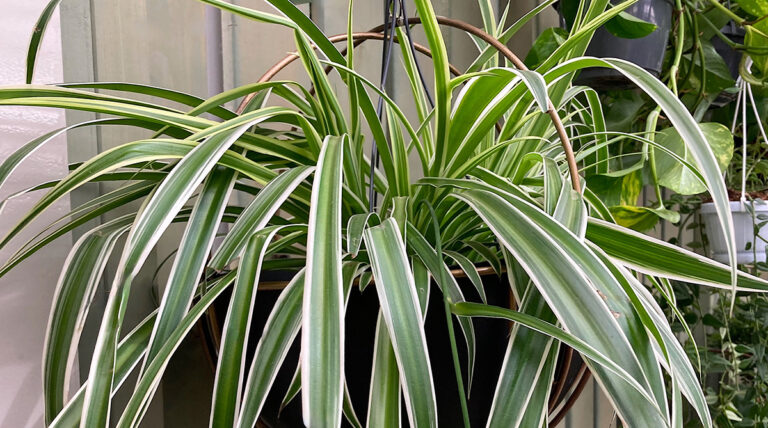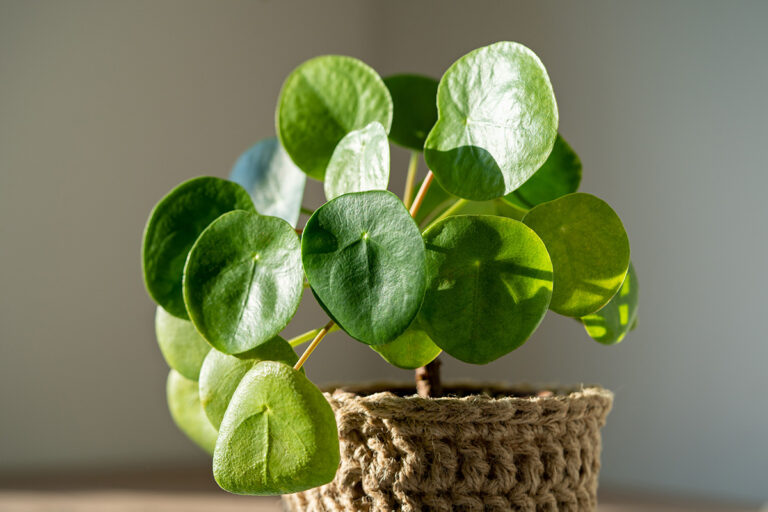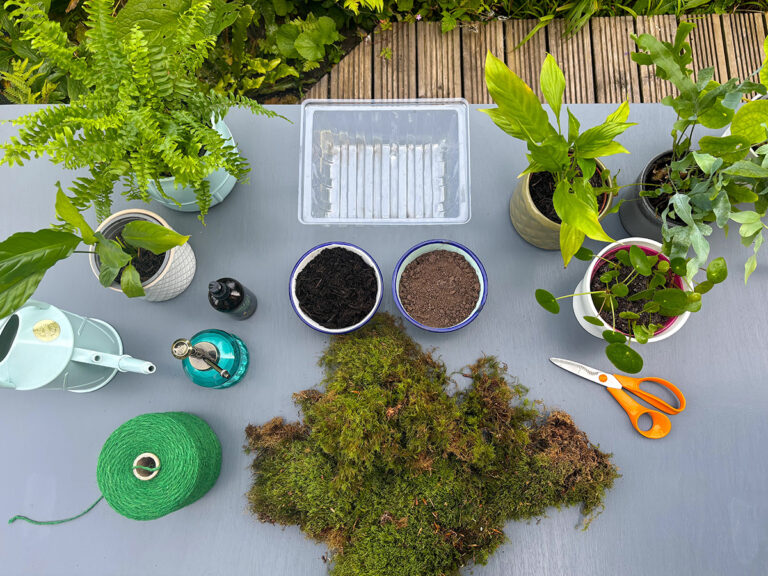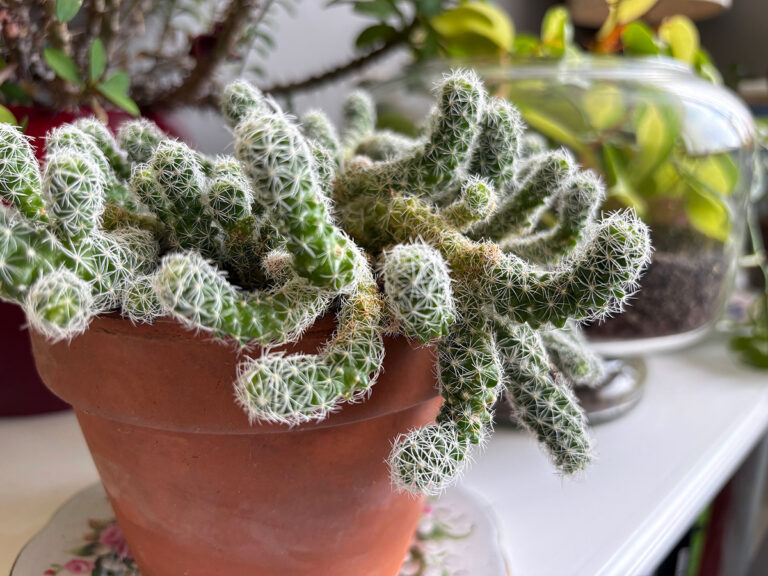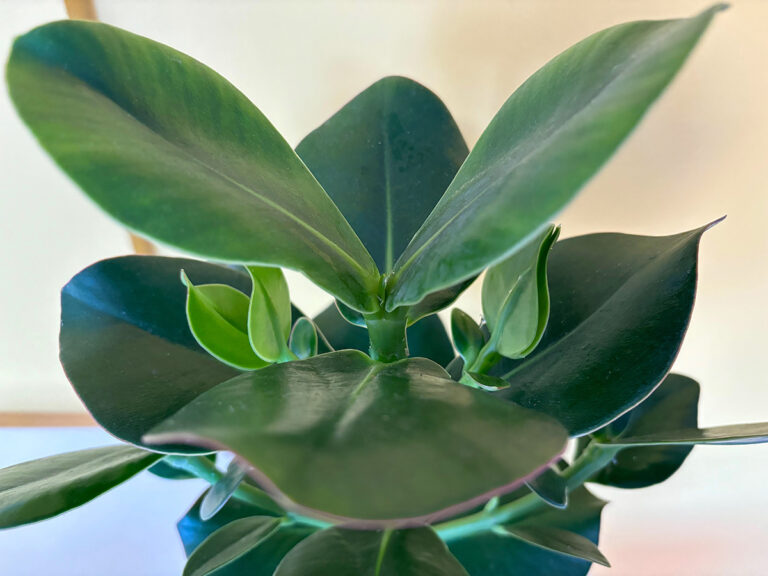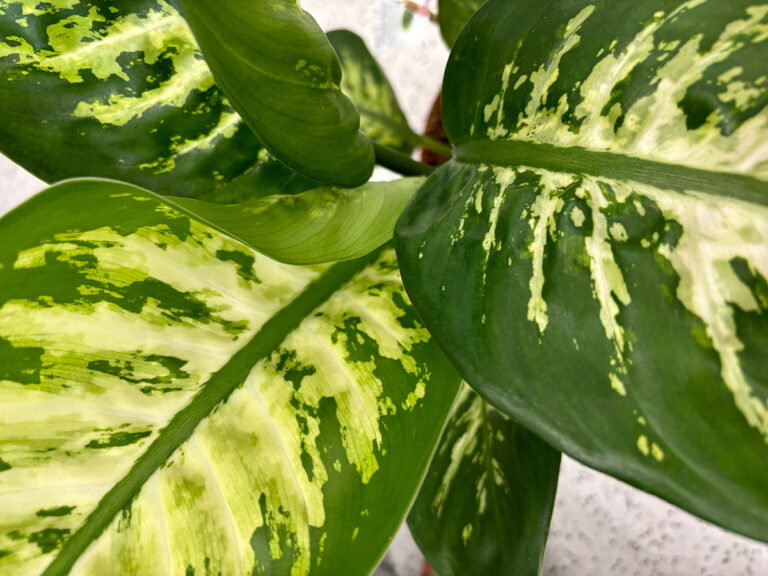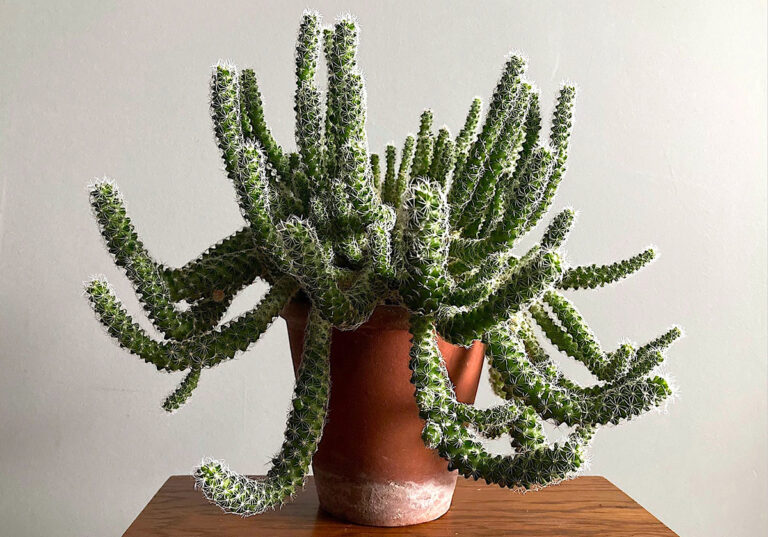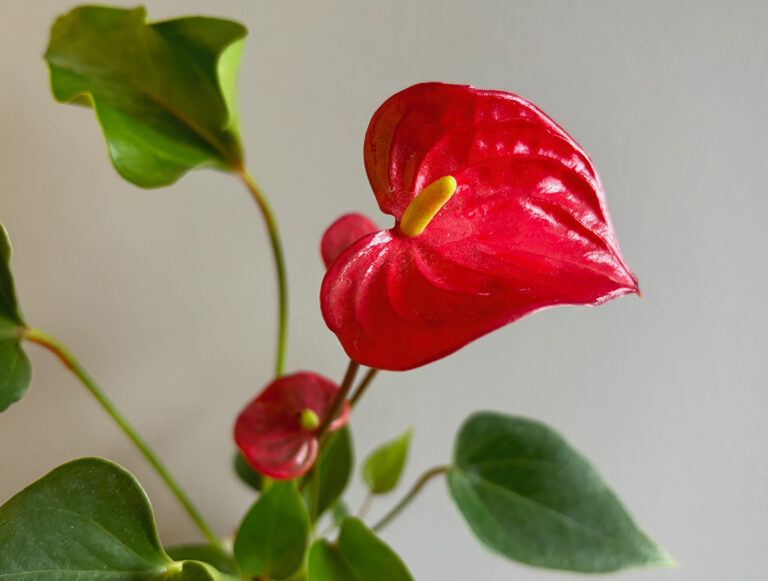Chlorophytum comosum is an evergreen, clump-forming perennial native to tropical and southern Africa; these fast growing plants are fairly compact but multiply easily. It has become a popular houseplant due to its low demands so a good pick for new houseplant parents.
Two of the most popular houseplants you will find available are C. comosum ‘Variegateum’ which has green leaves with white margins and C. comosum ‘Vittatum’ which has a central white stripe surrounded by green margins. The symmetry of these long, narrow leaves give the appearance that the leaf can be folded in half.
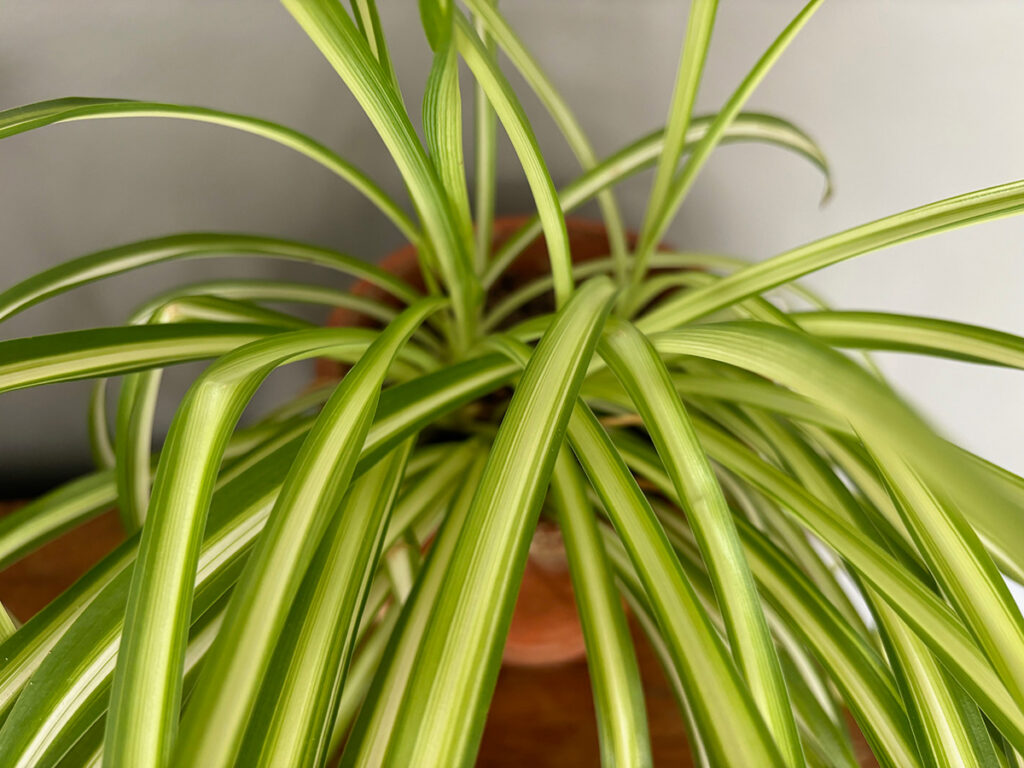
These plants are well suited to being displayed in macrame hanging baskets or cascading from shelves but equally their arching foliage looks striking simply placed on a table in a contrasting pot.
Although spider plants require minimal maintenance here are a few tips to keep your houseplant happy and healthy.
Light
Spider plants love bright indirect sunlight or light shade just keep them away from direct summer sun as that might scorch leaves. Be aware in very low light variegated leaves could revert to solid green. Turn pots regularly so all leaves can receive equal light from windows.
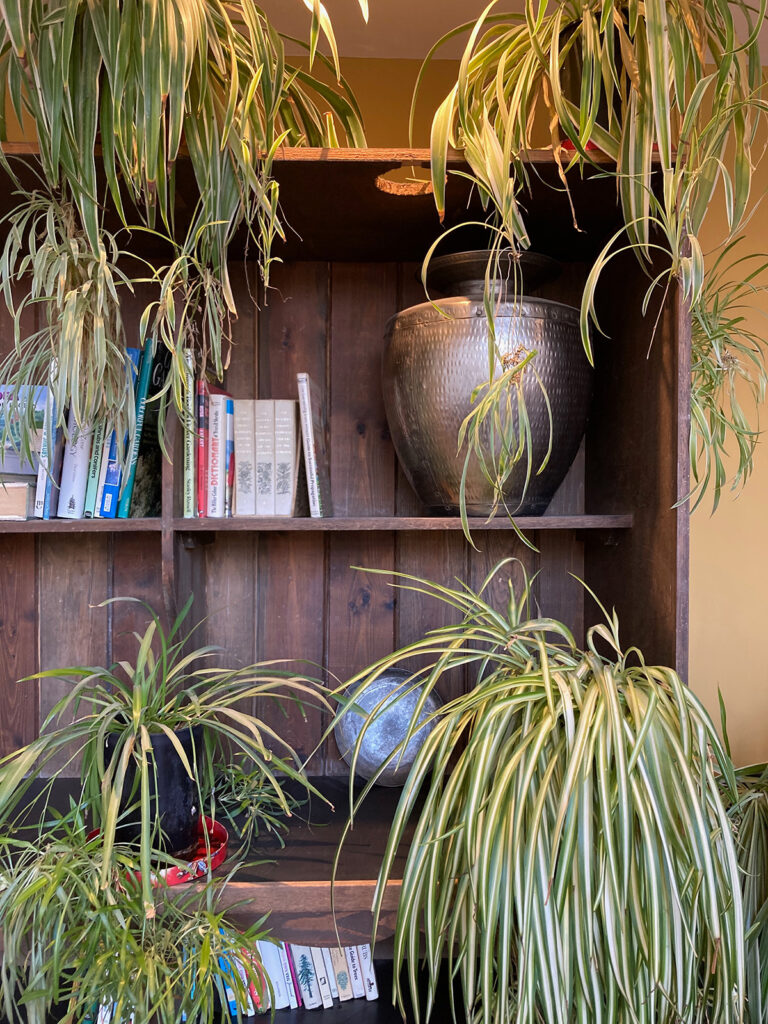
Water
Watering spider plants is a balance between keeping the soil moist without being constantly saturated; ideally allow the top inch of soil to dry with a view to watering every week from spring to summer.
Adjust your watering schedule accordingly if your plant is drying out quickly or holding on to moisture. Weather will always be a factor as to how quickly water is absorbed. Their tuberous, rhizomatous root system has aptly evolved to store water so are very forgiving of forgetful waterers!
Spider plants cope well in our homes; it is not essential to mist but your plant will no doubt benefit from raised humidity. Misting temporarily increases humidity around plants, compensating for the dry air in our homes. Most houseplants need more misting in hot weather but it is not vital with spider plants, they can cope without additional misting.
Spray with rainwater or for a nutritional boost use with Plantsmith’s Perfecting Houseplant Care Mist; this cruelty-free 100% vegan product contains 17 essential plant-boosting nutrients to promote houseplant health and resilience against pests and diseases.
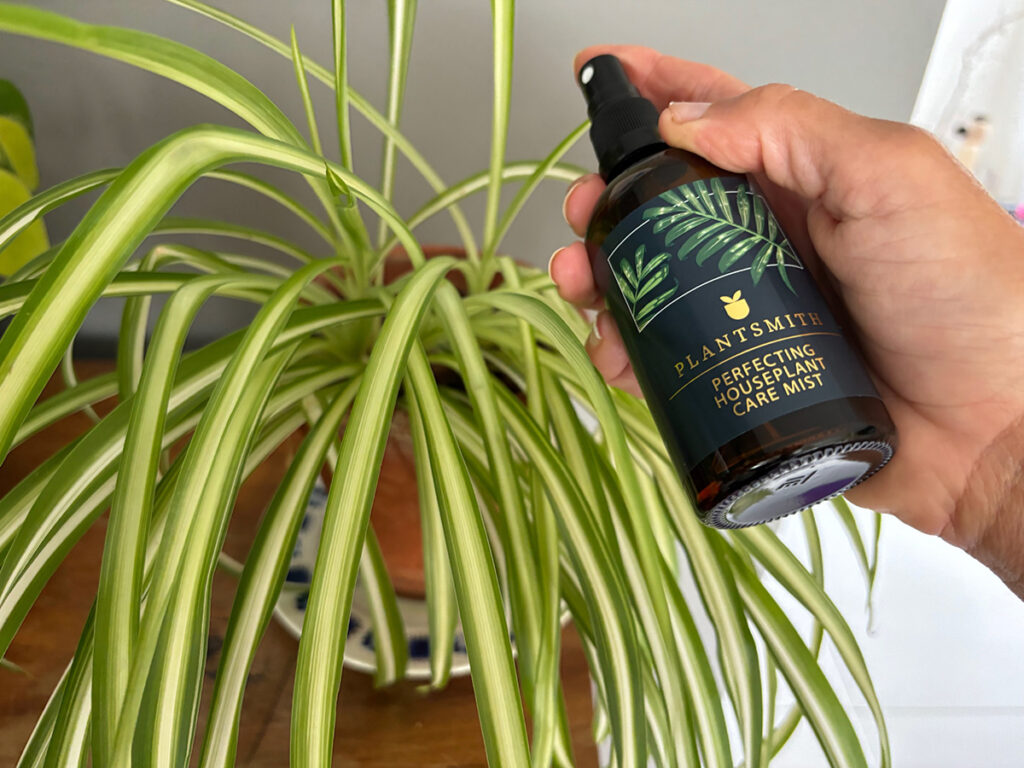
Be aware spider plants are sensitive to fluoride and chlorine in tap water which can make the tips of leaves turn brown so if possible stick to rainwater.
Temperature
Spider plants are comfortable in typical household temperatures anywhere between 15-26°C (60-80°F) but can survive temperatures much lower; no need to test your plant’s boundaries though. Keep plants clear of draughts and fluctuating temperatures from open windows and radiators and they should thrive.
Feeding
Spider plants have low feeding requirements; feeding once a month from April to September is ample but if your plant shows any signs of deficiency then giving them a feed will provide a boost.
Plantsmith’s Fortifying Houseplant Feed is a specially formulated houseplant feed containing 13 essential nutrients and minerals including iron, magnesium, kelp, potassium and essential micro and macro nutrients, which encourage strong, healthy growth and glossy leaves.
Shake the bottle then mix 5 ml (approx. 4 pumps from 500ml bottle) or dilute two full pipettes from the 100ml bottle per litre of tepid rainwater and water the soil.

Over fertilising houseplants can have a negative effect and actually damage plants as mineral salts can build up and burn roots so by feeding sparingly with a balanced dedicated houseplant food you can help keep houseplants flourishing and reduce the risk of succumbing to pests and diseases.
Soil
Spider plants are easy to please and will pretty much grow in any soil but ideally peat-free compost mixed with grit or sand for drainage will ensure this plant stays content.
Why not try Plantsmith’s peat-free coconut coir compost which is a dedicated houseplant compost containing slow release nutrients nourishing houseplants for up to six months.
Make sure plant pots have drainage holes in the bottom to prevent roots from sitting in water as this could cause rotting. Repot your plant every one or two years to refresh the growing medium.
Propagation
Mature plants propagate very easily by producing baby spider plants on the end of long stems; these babies are known endearingly as ‘spiderettes’. The spiderette develops adventitious roots which is the term for roots formed from non-root material, in this case the stem.
Snip off these plantlets and pop in a glass of water just deep enough for the root ball to touch the water and the roots will soon bulk up over the next couple of weeks or skip this step and go straight to planting up the cutting straight into a pot of gritty peat-free compost.
Another easy propagation method is layering the stem whilst it is still attached to the parent plant. Use a bent paper clip to pin the plantlet stem into a pot of compost next to the mother plant and let it root before separating by snipping it off to form an independent plant.
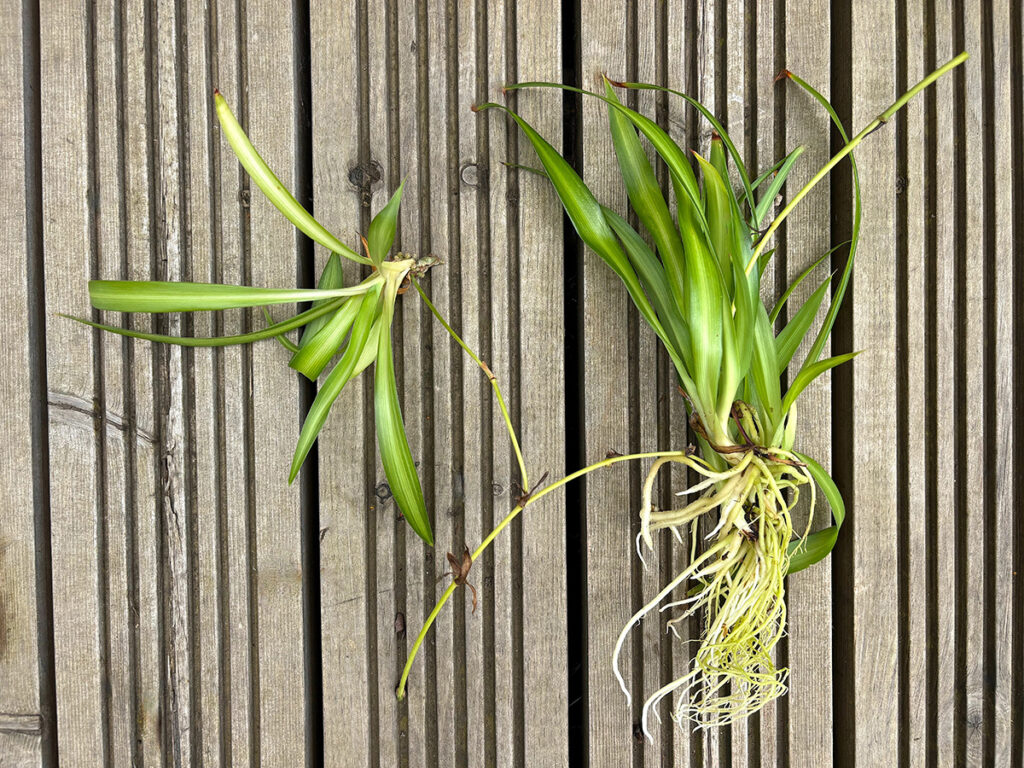
Pests
Spider plants are lucky to be fairly pest free but keep an eye out for any unwanted visitors incase sap suckers like mealybug or scale insects make an appearance.
To deter infestations regularly apply Plantsmith’s Bug Control Spray. If you spot pests in the houseplant’s leaf joints or on foliage remove them by hand.
Fungus gnats can plague any houseplant so protect your soil with Plantsmith’s Natural Fungus Gnat Barrier & Pot Topper; made from crushed olive pomace, this 100% natural topper deters fungus gnats from laying eggs in plant pots, breaking the lifecycle of the gnat.
Problem Solver
Safe for pets?
Thankfully spider plants are non-toxic to dogs, cats and humans but a side effect to be aware of in cats is that the plant is mildly hallucinogenic and can give felines an upset tummy! So if you see your cat taking an interest in your plant and having a nibble its best to move it to a shelf out of harms way.
Green foliage
Sometimes variegated plants can turn green, losing their coveted variegation. Variegated foliage often (but not always) arises from cross breeding techniques to create new cultivars, essentially they are genetic mutations. Turning green can be a sign that the plant is under stress so reverts to its strong, original parent colouring.
Reverting could be a sign the plant is not getting enough light, is fighting pests and diseases or struggling to get enough nutrients. If your plant reverts change the soil, give it a water and feed and changed its location within your home to more favourable lighting conditions.

Brown leaf tips
If the tips of leaves turn brown this can be an indication of underwatering or over fertilising so adjust your watering or feeding routine. Allow the top inch of soil to dry out between waterings and then give the pot a dunk and drain.
Spider plants are sensitive to tap water; chlorine and fluoride can also turn the tips of foliage brown so try and only use rainwater or cooled boiled water. New growth should emerge with healthy leaves.
Brown crispy leaves
On the whole brown crispy leaves are simply part of leaves natural lifecycle; gently pull to remove them but if you find leaves are turning crispy it could be due to underwatering. Take a judgement call and if you think it is water stress then give your houseplant a jolly good drench.
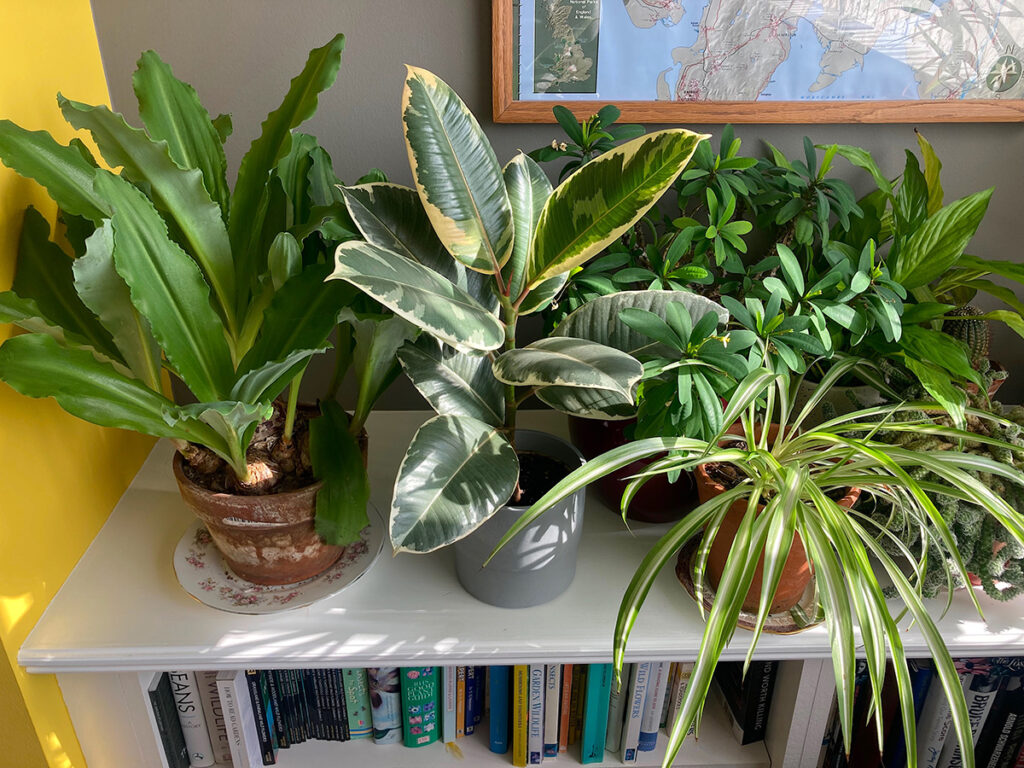
Yellow leaves
Again consider all the external environmental conditions the plant is experiencing. Yellow leaves could be a result of overwatering, unfavourable temperature or lighting.
Root rot
Overwatering could cause the plant’s roots to rot so be thoughtful to how often you water your houseplant. Give roots a break before rewetting, let them dry out a little between waterings; they love moisture but not being constantly saturated. Good drainage is the key to happy houseplants.
Can I make my spider plant flower?
In the right conditions spider plants will produce small star-like white flowers on the end of stem tips. If this does not naturally occur then try moving the pot to a brighter spot and leaving it in the same pot without repotting; being root bound may trigger flower production.
Fun Facts
These resilient plants are a symbol of good luck thought to expel negativity so they make a great present to give to friends.
Spider plants have the ability of making a fully formed offset, as mentioned in the propagation section. These ‘spiders’ grow on the end of stems and be snipped off and potted on.
Chlorophytum comosum was one of the tested plants in the 1989 NASA clean air study, ‘A study of interior landscape plants for indoor air pollution abatement’, where they concluded spider plants absorb volatile organic pollutants formaldehyde, xylene and toulene so this provides another valid reason to have a spider plant or two or three in your home.





